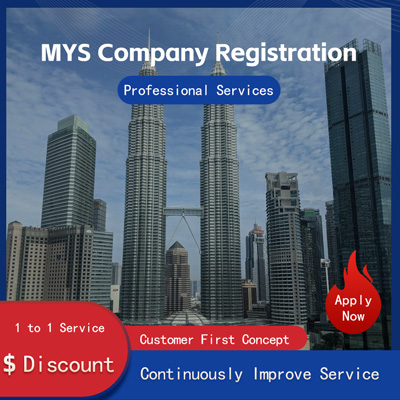
Capacity of 20-Foot Containers in Cross-Border Logistics How Many Tons Can They Hold?
Volume and Capacity of 20-Foot Containers in Cross-Border Logistics
With the continuous growth of global trade, the demand for cross-border logistics containers has also increased significantly. For logistics companies, efficient planning and management of container volume and capacity are crucial. Recently, there has been growing discussion around the volume and weight capacity of 20-foot containers. This article will explore these topics in detail, drawing on relevant news and information.

Firstly, it is important to understand what a container is. A container is a standardized enclosed transport unit commonly used for storing and transporting various types of goods. Its uniform specifications make it convenient for multimodal transportation, including sea, land, and air freight. Containers generally come in two main sizes 20 feet and 40 feet, with additional variations based on different functional requirements.
When it comes to the 20-foot container, understanding its volume and load capacity starts with knowing its basic dimensions length 5.698 meters, width 2.192 meters, and height 2.695 meters. Taking into account factors such as ventilation, moisture resistance, and protection from sunlight, the maximum loading volume of a 20-foot container is approximately 67 cubic meters. This figure is especially important for cross-border logistics companies, as it directly affects both transportation costs and operational efficiency.
Recently, some news reports have highlighted new standards regarding the weight limits of 20-foot containers. The new standard specifies that the weight per square meter should not exceed 450 kilograms. This regulation aims to ensure that containers remain structurally sound during long-haul transportation and do not become deformed or damaged due to overloading.
So, how many tons can a 20-foot container actually carry? This depends on several factors, including the type of cargo, its density, and packaging methods. Typically, containers are used to transport bulk goods such as agricultural products and industrial goods, which tend to be less dense. As a result, empty space must also be considered when calculating capacity. Based on general estimates, a 20-foot container can hold approximately 25 metric tons of cargo. However, this is only an approximation; actual loading volumes may vary depending on specific cargo characteristics.
In the field of cross-border logistics, container volume and weight capacity play a vital role in the operations of logistics enterprises. To meet increasing transportation demands, companies need to optimize their container usage to enhance efficiency and reduce costs. Additionally, with the implementation of new industry standards, logistics providers must stay informed about regulatory changes and market trends to ensure compliance and sustainable development.
In conclusion, the volume and weight capacity of cross-border logistics containers are significant topics worthy of attention. By exploring the details of 20-foot containers, we gain a clearer understanding of their function and impact within international supply chains. We hope this article provides useful insights and reference value for those seeking to better understand containerized shipping.
To directly address your final question a 20-foot container can typically carry around 25 metric tons of cargo. In practice, however, adjustments must be made based on the specific type of goods, their density, and packaging methods. We hope this information proves helpful to you.
Helpful (0)
No help (0)
Still have questions after reading? More than 98,000 users have contacted us. Please fill in the following information to obtain business information.

Service Scope
MoreRecommended for You
- SF Express International Business Overview
- Common Additional Fees for International Air Express Explained
- In-depth Analysis of Canada Ocean Freight Logistics Pricing Structure and Shipping Cost Calculation Method
- China-UK Rail Freight's New Momentum Reshaping Cross-border Logistics Dynamics in China-Europe Trade
- Air Freight FBA vs. Sea Freight In-Depth Analysis of Logistics Mode Selection Decision Models
- FBA First Leg Air Freight Logistics Transit Time Billing Methods Explained
- Counterfeit Goods in Cross-Border Logistics How Customs Identifies Fakes and the Challenges Involved
- Analysis of Matson Express Vessel's Charging Standards and Operational Process
- Must-See for Cross-Border Sellers! Guide to Avoiding Common Air Freight FBA First-Mile Logistics Traps, Saving You Time and Money
- FBA First Mile Logistics Pricing Quick Direct FBA First Mile Service Price List
- What is US FBA Sea Freight? - A Comparison with Traditional Ocean Shipping
- U.S. FBA Transport Breakthrough In-Depth Analysis and Tactical Guide on Air Freight Mode
- How to Choose Between Matson Express and Standard Ocean Freight for Cross-Border E-Commerce Sellers?
- U.S. FBA Air Freight Process and Customs Clearance Requirements Analysis
- High US FBA First-Mile Logistics Costs? These Tips Can Help Reduce Expenses!
- Key Considerations and Advantages of International Sea Freight Logistics
- U.S. Sea Freight Logistics Explained
- Air Freight FBA First Leg Cargo Detained Solutions for Customs Clearance Issues Prevention Strategies
- How to Avoid Customs Seizures in Cross-Border E-Commerce Logistics A Strategic Analysis
- FBA First-Mile Logistics Unlocking the Key to Efficient Cross-Border E-Commerce Operations


 ONE
ONE








Customer Reviews
Small *** Table
December 12, 2024The experience was very good. I was still struggling to compare it with other companies. I went to the site a few days ago and wanted to implement it as soon as possible. I didn't expect that everything exceeded my expectations. The company is very large, with several hundred square meters. The employees are also dedicated and responsible. There is also a wall of certificates. I placed an order on the spot. It turned out that I did not make a wrong choice. The company's service attitude is very good and professional. The person who contacted me explained various things in detail in advance. After placing the order, the follow-up was also very timely, and they took the initiative to report the progress to me. In short, I am very satisfied and recommend this company!
Lin *** e
December 18, 2024When I first consulted customer service, they recommended an agent to me. They were very professional and patient and provided excellent service. They answered my questions as they came in. This 2-to-1 service model is very thoughtful. I had a lot of questions that I didn’t understand, and it’s not easy to register a company in Hong Kong. Fortunately, I have you.
t *** 7
December 19, 2024I originally thought that they only did mainland business, but I didn’t expect that they had been doing Hong Kong business and were doing very well. After the on-site interview, I decided to ask them to arrange the registration of my Hong Kong company. They helped me complete it very quickly and provided all the necessary information. The efficiency was awesome. It turns out that professional things should be done by professionals.👍
b *** 5
December 16, 2024In order to register a company in Hong Kong, I compared many platforms and stores and finally chose this store. The merchant said that they have been operating offline for more than 10 years and are indeed an old team of corporate services. The efficiency is first-class, and the customer service is also very professional.